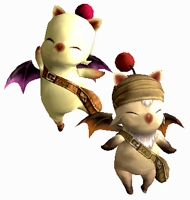

MOOGLE DEFEAT 15 OR MORE ENEMIES HOW TO
įor Final Fantasy XV, the developer team noted that they had to make careful considerations on how to deal with the inclusion of comical or cute characters in a game designed to be more realistic than its predecessors. One of the notable errors he corrected prior to the game's release was the original in-game description for the Cactuar, which was translated from Japanese to English as "It ejaculates needles!". Smith, who played a major role in the English localizations of games developed and published by Square and later Square Enix like Vagrant Story and Final Fantasy XII, helped re-write translations written by a Japanese native translator for one of the PlayStation Final Fantasy games in the 1990s.

The design of the Cactuar's face resemble haniwa, a type of terracotta clay figure traditionally used for ritual and funerary purposes during the Kofun period in Japanese history. While the Cactuar still appear as recurring enemies in modern titles, they are also depicted as summoned allies as well as friendly non-player characters.Īccording to Japanese video game artist, game designer and director at Square Enix Tetsuya Nomura, the concept of the Cactuar is based on a doodle he drew on a notebook when he was attending high school as a teenager. By the 2010s, the Cactuar has attained widespread popularity with Final Fantasy fans, and is considered one of the established mascots of the long-running series alongside the Moogle and the Chocobo. One of the recurring elements of the series, it initially appeared as an enemy in Final Fantasy VI. They are usually depicted as anthropomorphic cacti with haniwa-like faces in a running or dashing pose. Cactender) is a fictional species of plant-like beings from the Final Fantasy video game franchise. The Cactuar, known in Japan as Sabotender ( サボテンダー, Sabotendā, lit.

The Cactuar as depicted in Final Fantasy VII Remake.


 0 kommentar(er)
0 kommentar(er)
